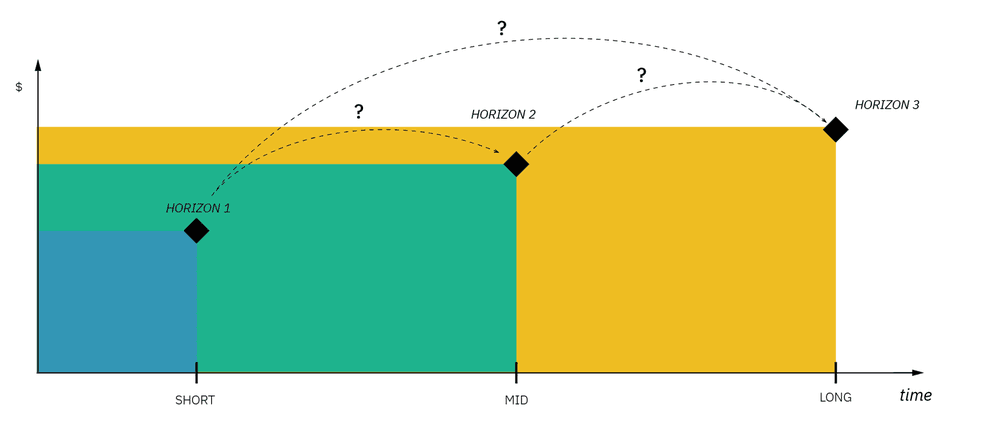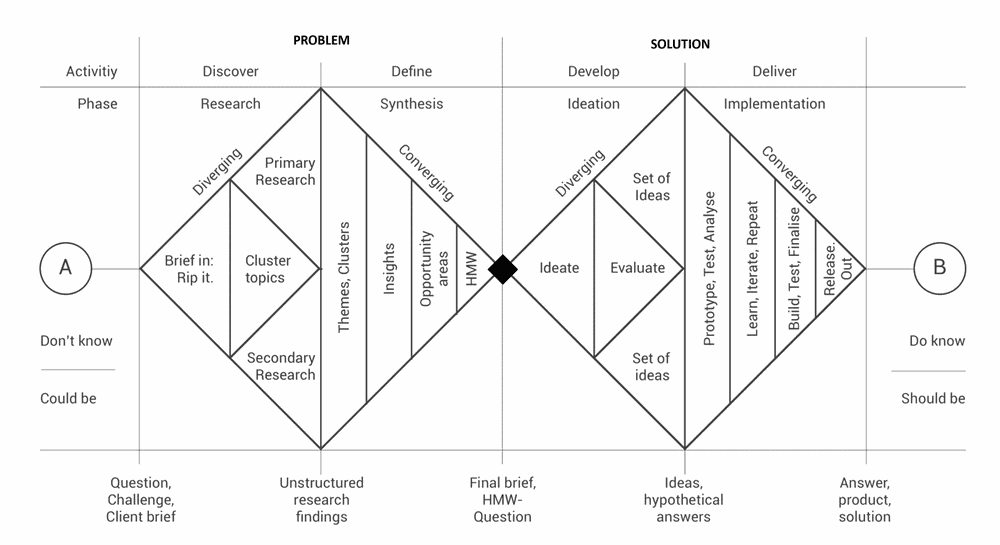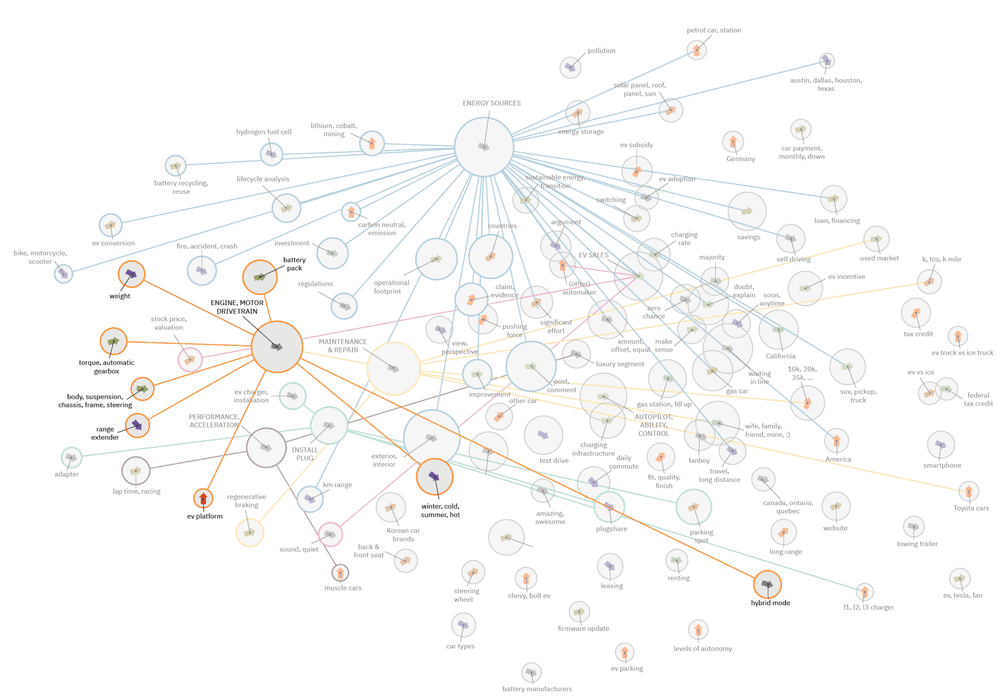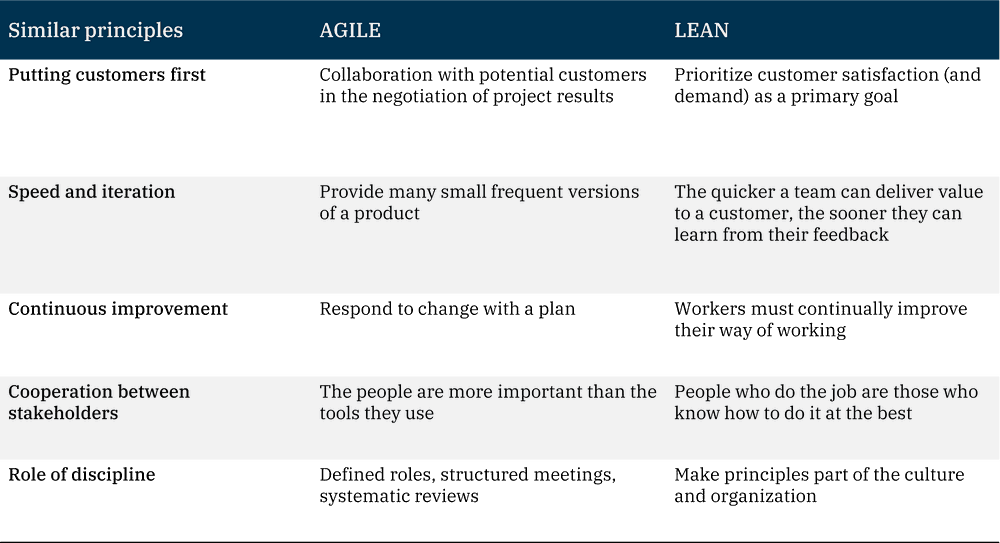Innovation management is a young discipline: we notice an exponential growth in academic research papers since the early 2000’s. Creax analyzed over 54.000 scientific papers and came to some interesting conclusions that we want to share. Innovation is crucial and of strategic importance to safeguard the future of the company. At the same time, the research illustrates why companies still struggle with efficient innovation. It is complex and has become an expertise as such. To unveil the innovation challenge, we publish this series of thought provoking insights. We kindly invite all readers to comment and contribute.
The world is changing faster than ever, as customer demands and expectations do. The manufacturing industry must roll up its sleeves and re-think its new product development strategy. It is essential to go beyond improving and refining existing products. At some point, these products will become commoditized, or even unwanted, as better solutions will be offered by other players. Add to that the need for faster development cycles, and you know that companies will have to move up a gear. Hence, an innovative product portfolio is becoming a necessity.
Faster & better is the new prerequisite.
Product refinement and tweaking can often be dealt with by relying on in-house knowledge. Developing a next generation of products however, requires a more drastic organization. The search for emerging technological drivers, and discovering the future needs of your customers (or the customers of your customers) is more challenging. It is necessary to think beyond what we currently know and to imagine what lies beyond the horizon. But there is a way to deal with this ambidexterity in product development: the 3-Horizon model (Figure 1). First coined by Baghai, Coley, and White in ‘The Alchemy of Growth’ (2000), this framework sets out a methodology to define your future product portfolio and, even more important, to balance the paths for getting there.

Horizon 1 is often linked to the short-term product strategy and seeks to strengthen the product’s positioning in the current competitive landscape. Only minor adjustments are made to products to differentiate them, but they essentially meet the consumer needs in the same way. To secure the future of the business, however, companies cannot restrict themselves exclusively to this horizon. As stated, other players are rapidly coming up with better and alternative solutions.
Horizon 2 aims to differentiate by integrating new technologies, borrowed from adjacent fields. For example, the production of conventional shoes, but with a new clamping system. This is not at all disruptive, but it is still a deviation from the usual model. Very often, Horizon 2 is seen as truly innovative. Companies are reluctant to change. Introducing new technology into products is already considered a huge step. However, at some point, one must move away from the current product and come up with a new disruptive solution to meet a current (or future) need.
Horizon 3 is primarily tied to long-term strategy, and the products envisioned rely entirely on new technologies to meet these needs in a completely new manner. This brings us back to our previous article on organizational ambidexterity: exploitative innovation is linked to Horizon 1, explorative innovation is associated with Horizon 3, while Horizon 2 takes bits from both worlds. It is important to note that the individual Horizons are not separate targets. The selection of opportunities for one of the three horizons clearly affects the selection of opportunities for another horizon.
It is the chain of opportunities selected across the three horizons that forms the basis of the new product development strategy. Furthermore, once all horizons are established, the respective research and development tracks can begin. It is critical that development for each horizon occurs in parallel, and not sequentially. Research for the Horizon 3 goal should begin at the same time as Horizon 1. Of course, initially more time and effort will be spent on Horizon 1.

Resource allocation in the 3-Horizon model; X-axis: short-, mid- and long-term roadmap (time), Y-axis: investment (EUR, USD) – Budgets should be allocated to opportunities in Horizons 1, 2, and 3 for research, development, and ongoing monitoring of the validity of the opportunities. In other words, all opportunities must regularly be challenged (question marks in the graph) in time.
The overall horizon time span can vary a lot depending on your industry and application. In the world of fast-moving consumer goods (FMCG), horizons are very close to each other ( about 1 every year), wherein other industries, such as automotive, they can be very much apart and span a decade. We can therefore assume that, if a company wants to survive and remain competitive in the long term, it must look beyond the first horizon. Goals must be set, not only for the short-term, but also for the medium and long-term future. But how do we imagine and develop products for all 3 horizons?
The double diamond is the basics of design thinking and has been around for quite some time now (Gustafsson, 2019). The double diamond, as the term gives away, revolves around two diamonds (Figure 3). Each diamond has a converging phase and a diverging phase. The first diamond is all about discovering and selecting the right opportunities for the given challenge, while the second is about imagining and developing the right solutions towards a final product.

The two diamonds go hand in hand, and should be considered equally important. Defining a well-supported problem takes time and resources, but if done well, it can give companies an edge over the competition. Since knowing a problem is half the solution. When developing for Horizon 1, the near future, the first diamond is often overlooked though. The impression can be created that the problem statement or design brief is still very similar and well-known. As established before, this can be quite risky. Problem statements do change over time, as a result of changing consumer needs, new trends and even new technologies. If a company cannot react to this, they risk developing an obsolete, out of fashion product sooner or later. Perhaps these models are well known to you as a product designer, and we are not telling you anything new. But when you are involved in a strategic product portfolio, the creation of (next generation) products must be fully aligned with the company’s innovation strategy and result in a balanced product portfolio. This is increasingly recognized in academic research on innovation management over the past 20 years.
Remember the 54K scientific papers on innovation management we have collected. For this blog, we used our AI-driven multi-source text-mining platform to filter out 10.061 documents and 524 story lines discussing strategies and techniques for New Product Development and trends therein. The first thing that clearly pops up is that, since the mid-1990s, there has been a continuous effort to optimize the first diamond. New product design briefs are becoming more accurate since they are based on the identification of the best opportunities. These opportunities are identified through the systematic discovery of customer needs and methodological exploration of technological possibilities.

Trends in New Product Development, as revealed from 10K+ scientific papers on innovation management.
Other themes that remain prominent in new product development are, logically, conceptualization, (detailed) design and engineering, and business case development. However, one theme that deserves particular attention is the need to develop faster and more efficiently. This is a question we receive regularly and is driven by the need to respond more quickly to the market. Getting worried? You shouldn’t be. Don’t see these changes as a threat. They represent an opportunity if your company does it the right way. And that starts with determining your customers’ needs.
Anticipate better. Although this step seems logical and obvious, it is not always easy to do this properly. But advances in methodologies have been made over the past decade. Online customer needs analysis has emerged as the newest academic subfield within discovery (the divergent half of the first diamond). There is a big awareness that consumer (product) perception drives the business, and getting to know the core users is essential. They report the need for new products long before the mass of consumers. If one can identify the core user, one has a considerable advantage in terms of new product development. The opportunity here is to move away from standard user surveys and focus on the analysis of public consumer data through, e.g., social media channels. Such an approach provides surprising new insights that were previously nearly impossible to obtain through more traditional market research. In addition, it is much faster and more unbiased than traditional market research. Serious efforts have been been in that sense, and it is now perfectly possible to scrape multiple social media platforms and analyze the data using various AI algorithms to identify not only core users, but also hidden needs.
An example is shown here below: Creax did the test by letting our text mining platform Mynd analyze over 60,000 user comments from public discussion forums on the topic of electric cars (Figure 5). The graph reveals important themes (bubbles) that are discussed by the consumers, such as range anxiety, conversion, battery technology, etc. Most interesting is that the themes are interlinked as ‘webs’, forming complete stories. This kind of information, here easily interpreted from the graph, allows car manufacturers to identify where the big gains can be found.

Mynd high-level interpretation of 60K+ consumer comments on electric cars.
How to develop fast(er) and more efficient is a consistent topic in the NPD field. The business environment is changing rapidly, as are the rules of the game. Continuous innovation is the key to winning in this dynamic marketplace: quickly converting new ideas into marketable new products while gathering consumer feedback. This does not always mean creating new products: it can also involve finding new markets for existing products. This is what we call the value ownership opportunity.
The academic literature has identified two practices from other fields that can reduce time to market. The first is AGILE borrowed from the software field, i.e., dividing tasks into short work phases and frequently re-evaluating and adapting plans as necessary. The second is LEAN derived from the industrial production environment: maximizing productivity while simultaneously minimizing wasteful practices. Because they have very similar principles these approaches go together wonderfully: implement methodological principles as part of the culture, and implement defined roles, structured meetings, and systematic reviews in the organization.

Similarities between Agile and Lean methodologies, based on Mynd text analysis of 10K+ scientific papers on innovation management
It is clear that academic researchers are looking for new ways and methods to meet the (individualized) needs of the customer in a rapidly changing world. Companies are recommended, if not done already, to incorporate this new approach to opportunity detection, as well as faster development, into their product design process. But what are the tools to facilitate the next step in New product development, namely, ideation and conceptualization? Very little has been published and a lot of focus is on the creative mind of the product developer. Still, a systematic methodology significantly ameliorates this process. One of the approaches is cross-industry learning, in which ideas & technologies from other industries facing similar challenges are searched, structured and combined into concepts. Making various combinations lead to distinctive and differentiating products and technological solutions for a given challenge. It is a philosophy preached by Steve Jobs, Elon Musk and – well euhm – us. The advantage is clear: a structured and more efficient ideation process, with decreased development times. Above all, by ‘re-searching’ the existing, you don’t reinvent the wheel. Nonetheless, identifying the best combinations of ideas and principles is still very elusive because it seems to be based on gut feeling. This often clashes with different methodologies. And gut feeling simply does not fit into a matrix. That’s why many call this part of the development process “where the magic happens.” At Creax, we are convinced that AI will also play a role in this new conceptualization approach. Today there are already experiments with AI that generate rudimentary product concepts in seconds. It is then up to the user to rate them and ask for more iterations if needed, quickly going trough many iterations of what-could-be.
Building on two decades of experience with over 1,250 projects in a wide range of industries. Creax is a trustworthy innovation partner.
Building on two decades of experience with over 1,250 projects in a wide range of industries, Creax is a proven innovation expert.